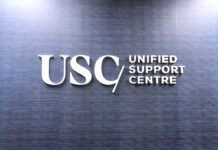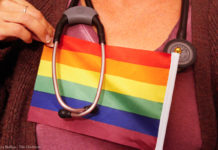Dating is never easy. Building the courage to ask somebody out, deciding what to wear on a first date, when to lean in for that kiss; all these things make dating a test for the nerves.
And if you’re LGBTTQ+ (lesbian, gay, bisexual, transgender, two-spirited, or queer), things become even more complicated.
Dating as an LGBTTQ+ teen or young adult comes with many challenges. The first is trying to find others in the group, according to psychologist Karen Blair.
Blair earned her PhD at the sexual health research laboratory at Queen’s University, and is now a postdoctoral fellow at the University of Utah.
“It can be quite dangerous, emotionally and physically, for a gay man to make a pass at a heterosexual man,” she said.
This is improving. People are more likely to politely decline advances from gay and lesbian suitors, but Blair said there is still a risk that person might respond with anger or violence.
“I read an article about a young teenage boy who received a valentine from another boy and gracefully let that boy down, but there was also a story about another young boy who was killed for giving a straight boy a valentine,” she said.
There are a variety of dating sites that cater to the LGBTTQ+ community, including pinksofa.com for women, and GrindR and gay.com for men.
Major dating sites like match.com and plentyoffish.com also allow users to seek out same-sex partners.
Consequently, same-sex couples are about three times more likely to meet their partners online, she said, citing a study she worked on in 2008.
“To them, it was a great resource for finding other individuals, and in fact, online dating can remove a lot of the stressful barriers to dating for [LGBTTQ+] individuals — such as wondering whether the person you are about to ask out is actually ‘playing for the same team’ or not,” she said.
The Internet can be a great resource, but it can be frustrating for the members of the LGBTTQ+ community who face the most alienation.
Carleton University student Rubes Pascoe, who is a trans* (a more inclusive term for transgender), man, said he recently signed up for popular dating resource OKCupid.
“I just got on OkCupid three or four weeks ago.” “I don’t really [like it], I just get a lot of creeps.”
He said a lot of users have messaged him to tell him they don’t like transgendered people.
He has often dealt with people saying transgendered people are not part of the LGBTTQ+ community, he said.
Mixed-sex couples are much more likely to meet their partners through a friend or family member, Blair said.
An introduction by a member of a social network provides a sense of support for the match from the very beginning of the relationship, Blair said.
It is much harder for a same-sex couple to achieve this, because even parents who support their sexual minority children rarely set up potential same-sex matches.
“While finding a partner can be more challenging for LGBTQ individuals — simply due to a numbers game — I think the real challenges come when they find a partner and need to function with that partner in a society that views their relationship as ‘less real’ than a mixed-sex relationship,” Blair said.
“Less legitimate, less committed, less mature — simply less than,” she said.
She said she spent an hour looking for an appropriate Valentine’s Day card that did not portray a man and woman in love for her same-sex partner. She finally settled on one with cute animals.
“First, they have to come out and realize even within themselves that they want to be in something other than a mixed-sex relationship.”
“Then they have to navigate their own world that may or may not be accepting of that realization,” she said.
Apart from finding other people, there is a lot of division within the LGBTTQ+ community which can make dating very difficult, said Riley Evans, a second-year political science and communications student at Carleton.
He has dated both men and women and said some of his partners do not like his “fluid” sexuality.
“The worst reaction I got was someone who said ‘Ew, that’s gross,’ and he up and left,” Evans said.
Evans said many gay men are misogynistic, and have essentially said to him, “if you’ve touched a vagina, I don’t want to touch you.”
He said women have typically handled it better, but many are still uncomfortable at the thought of dating a man who is attracted to men.
There is a lot of mistrust of bisexual or polysexual people from both within and outside of the LGBTTQ+ community, said Heather Armstrong, a PhD candidate at the University of Ottawa. She is doing her thesis on bisexual women.
She conducted an online survey which asked 373 women and 345 men about their thoughts on dating someone bisexual.
She said most women were hesitant at the idea of dating a man who was attracted to other men.
Men were much more open to the idea of having a relationship with a bisexual woman, she said.
“Our society plays up this idea of the bisexual female being very sexy, outgoing, fun and flirty, kind of open to new experiences,” she said.
“The reverse tends to be true, when it comes to the idea of the bisexual male. They’re seen as untrustworthy, or they’re really just gay, they’re just lying to themselves.”
There is “a double discrimination,” because heterosexual people tend be wary of bisexuals’ attraction to same-sex partners, while some in the LGBTTQ+ community tend to question why bisexual people are attracted to the opposite sex at all, Armstrong said.
She said people assign a barrage of stereotypes to the bisexual community: that they are unfaithful, promiscuous, and therefore more likely to spread sexually transferred infections.
“I think a lot of times those stereotypes are false. People still place a lot of weight on that, but when you start to look at the literature, you see that’s really not the case: bisexual people are not more likely to cheat on their partners, they’re not more likely to be hypersexual,” she said.






